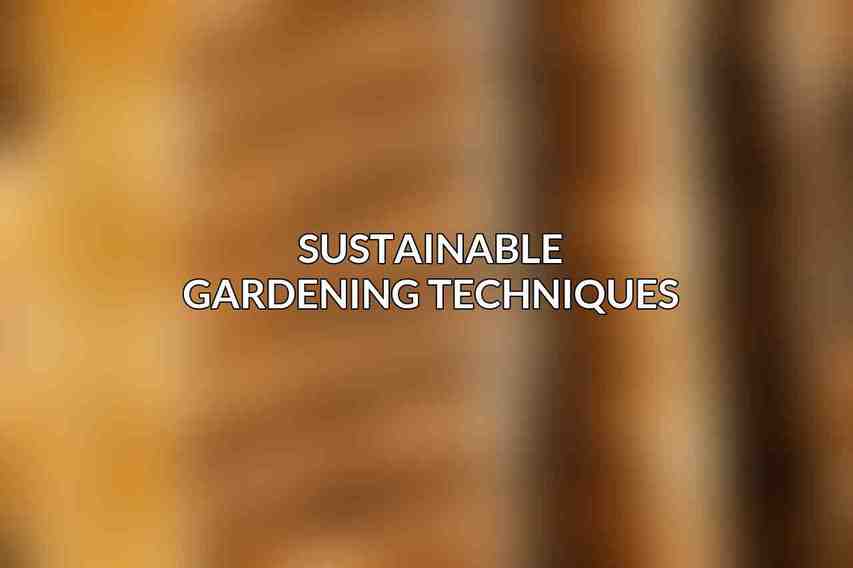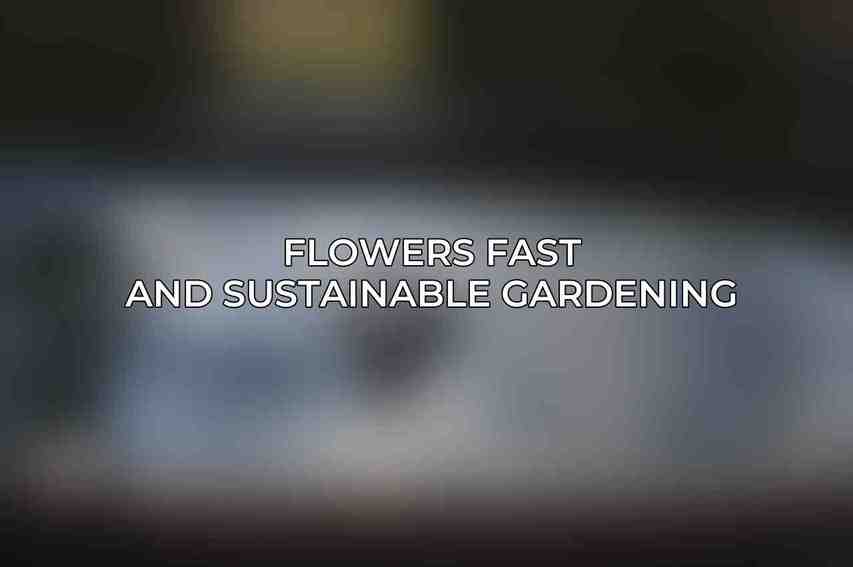Sustainable gardening has become increasingly essential in this world as we strive to reduce our impact on the environment. By implementing eco-friendly practices, gardeners can contribute positively to the ecosystem while enjoying the beauty of their gardens. Embracing sustainable gardening techniques not only benefits the environment but also enhances the overall well-being of individuals. It promotes biodiversity, conserves resources, and fosters a healthier ecosystem.
Moreover, using eco-friendly gardening tools and techniques goes hand in hand with sustainable gardening practices. These tools are designed to reduce carbon footprints, minimize waste, and promote a more sustainable approach to gardening. From hand tools made of sustainable materials to eco-friendly power tools and irrigation systems, incorporating these tools into gardening routines can make a significant difference in environmental impact.
| Product | Features | Benefits | |||||||||||||||||||||||||||||||||||||||||||||||||||||||||||||||||||||||||||||||||||||||||||||||||
|---|---|---|---|---|---|---|---|---|---|---|---|---|---|---|---|---|---|---|---|---|---|---|---|---|---|---|---|---|---|---|---|---|---|---|---|---|---|---|---|---|---|---|---|---|---|---|---|---|---|---|---|---|---|---|---|---|---|---|---|---|---|---|---|---|---|---|---|---|---|---|---|---|---|---|---|---|---|---|---|---|---|---|---|---|---|---|---|---|---|---|---|---|---|---|---|---|---|---|---|
| Hydroponic Grow Kit | Plant nutrients delivered directly to roots | Faster growth, higher yields, and less water usage | |||||||||||||||||||||||||||||||||||||||||||||||||||||||||||||||||||||||||||||||||||||||||||||||||
| Indoor Herb Garden | LED grow lights provide optimal sunlight | Year-round access to fresh herbs, reducing grocery store trips and plastic packaging | |||||||||||||||||||||||||||||||||||||||||||||||||||||||||||||||||||||||||||||||||||||||||||||||||
| Vertical Planter | Space-saving design | Allows for gardening in small spaces, promoting apartment living and reducing urban sprawl | |||||||||||||||||||||||||||||||||||||||||||||||||||||||||||||||||||||||||||||||||||||||||||||||||
| Compost Bin | Converts food scraps into nutrient-rich soil | Reduces waste and improves soil health, promoting sustainable gardening practices | |||||||||||||||||||||||||||||||||||||||||||||||||||||||||||||||||||||||||||||||||||||||||||||||||
| Rain Barrel | Collects rainwater for irrigation | Conserves water and reduces reliance on municipal sources | |||||||||||||||||||||||||||||||||||||||||||||||||||||||||||||||||||||||||||||||||||||||||||||||||
| Solar-Powered Water Pump | Uses solar energy to pump water | Eliminates the need for electricity, reducing carbon emissions and promoting renewable energy | |||||||||||||||||||||||||||||||||||||||||||||||||||||||||||||||||||||||||||||||||||||||||||||||||
| Visit Flowers Fast | |||||||||||||||||||||||||||||||||||||||||||||||||||||||||||||||||||||||||||||||||||||||||||||||||||
Eco-Friendly Gardening Tools

When it comes to selecting gardening tools, choosing eco-friendly options can make a substantial difference in sustainability efforts. Here are various types of eco-friendly gardening tools to consider:
1. Hand Tools
Hand tools are essential for every gardener and opting for those made from sustainable materials can greatly reduce environmental impact. Tools crafted from bamboo or stainless steel are not only durable but also environmentally friendly. An excellent example of such a tool is the Fiskars Ergo Handle Bypass Loppers.
Power Tools
For tasks requiring more power, eco-friendly options in the form of electric or battery-powered tools are available. These tools offer efficiency while reducing reliance on fossil fuels. The WORX 20V Power Share GT Revolution 12″ String Trimmer & Edger is a great example of an eco-friendly power tool.
Irrigation Systems
Efficient water usage is crucial in gardening, and eco-friendly irrigation systems like drip irrigation and soaker hoses help conserve water. The Orbit 62088 B-hyve Smart Indoor and Outdoor Wi-Fi Sprinkler Controller is a smart choice for sustainable watering practices.
Compost Bins and Worm Bins
Home composting solutions not only reduce waste but also enrich soil health. Investing in compost bins like the FCMP Outdoor Tumbling Composter encourages sustainability by turning kitchen scraps and yard waste into valuable compost for the garden.
Sustainable Gardening Techniques

In addition to using eco-friendly tools, incorporating sustainable gardening techniques is essential for a truly green garden. By implementing practices that promote soil health, water conservation, pest and disease management, and sustainable landscaping, gardeners can create a thriving ecosystem in their own backyard.
A. Soil Management
Soil health is the foundation of a successful garden, and sustainable soil management practices can significantly impact plant growth and overall ecosystem health.
- Organic Mulches: Using organic materials such as straw, compost, or cardboard as mulch offers various benefits, including weed suppression, moisture retention, and soil enrichment.
- Cover Crops: Planting cover crops like clover, ryegrass, or alfalfa helps improve soil structure, prevent erosion, and enhance nutrient availability.
- No-Till Gardening: Minimizing soil disturbance through no-till gardening preserves soil structure and promotes beneficial soil organisms, ultimately leading to healthier plants.
B. Water Conservation
Water is a precious resource, and implementing water conservation techniques in the garden is crucial for sustainability.
- Rainwater Harvesting: Collecting rainwater using rain barrels or cisterns reduces reliance on municipal water sources and provides a free water supply for garden irrigation.
- Xeriscaping: Designing a xeriscape garden with drought-tolerant plants conserves water and promotes a resilient world in arid regions.
- Mulching and Drip Irrigation: Mulching helps retain soil moisture and reduces water evaporation, while drip irrigation delivers water directly to plant roots, minimizing water waste.
C. Pest and Disease Management
Maintaining a balance in pest and disease control is crucial in sustainable gardening to protect plant health without harming the environment.
- Integrated Pest Management (IPM): Emphasizing prevention and using natural solutions like crop rotation and companion planting reduces the need for chemical pesticides.
- Organic Pest Control: Utilizing natural pesticides such as neem oil or insecticidal soap effectively controls pests while preserving beneficial insects and pollinators.
- Disease Resistance: Selecting plant varieties resistant to common diseases reduces the reliance on chemical treatments, promoting a healthier garden ecosystem.
D. Sustainable Landscaping
Creating a sustainable world involves incorporating native plants, attracting pollinators, and providing habitats for wildlife.
- Native Plant Species: Using native plants in landscaping benefits local wildlife, conserves water, and requires less maintenance than non-native species.
- Pollinator Gardens: By cultivating plants that attract pollinators like bees and butterflies, gardeners support biodiversity and enhance fruit and vegetable production.
- Wildlife Habitat Gardens: Designing gardens that provide shelter, food, and water for wildlife species contributes to biodiversity conservation and creates a harmonious ecosystem.
Flowers Fast and Sustainable Gardening

Flowers Fast, a leader in the online flower delivery industry, has also made significant contributions to sustainable gardening practices. The company is committed to sustainability by incorporating eco-friendly packaging materials and implementing environmentally conscious delivery practices. Customers can enjoy beautiful blooms while supporting a company dedicated to reducing its environmental footprint. Additionally, Flowers Fast provides valuable sustainable gardening tips and resources to help their customers create eco-friendly gardens at home.
For those interested in exploring Flowers Fast’s sustainable gardening initiatives further, their website offers a wealth of information on how to incorporate sustainable practices into your gardening routine. From eco-friendly flower choices to sustainable garden design tips, Flowers Fast is an excellent resource for environmentally conscious gardeners.
sustainable gardening practices are crucial for preserving the environment, conserving resources, and promoting biodiversity. By adopting eco-friendly tools and techniques, gardeners can make a positive impact on the planet while enjoying the beauty of their worlds. It is imperative for gardeners to embrace sustainability in their gardening endeavors to create a greener future for generations to come. Let’s continue to nurture our gardens with care and conscientiousness, one plant at a time.
Frequently Asked Questions
What are eco-friendly tools for sustainable gardening?
Eco-friendly tools for sustainable gardening include hand tools made from sustainable materials like bamboo or recycled metal, ergonomic wheelbarrows with minimal environmental impact, and battery-powered tools that reduce emissions.
How can I reduce water usage in my garden?
To reduce water usage in your garden, practice drip irrigation instead of traditional sprinklers, mulch around plants to retain moisture, collect rainwater in a barrel for irrigation, and choose drought-resistant plants that require less watering.
Are there any natural pest control methods for sustainable gardening?
Yes, there are several natural pest control methods for sustainable gardening, such as introducing beneficial insects like ladybugs and lacewings, using neem oil or soap sprays to deter pests, and planting herbs like basil and mint that repel insects.
Why is composting important in sustainable gardening?
Composting is important in sustainable gardening because it enriches the soil with essential nutrients, reduces the need for chemical fertilizers, helps retain moisture in the soil, and reduces waste by recycling organic materials.
How can I make my garden more wildlife-friendly?
To make your garden more wildlife-friendly, plant native flowers and shrubs that attract pollinators like bees and butterflies, create habitats like birdhouses and bee hotels, provide water sources like birdbaths or shallow dishes, and avoid using chemicals that harm wildlife.

